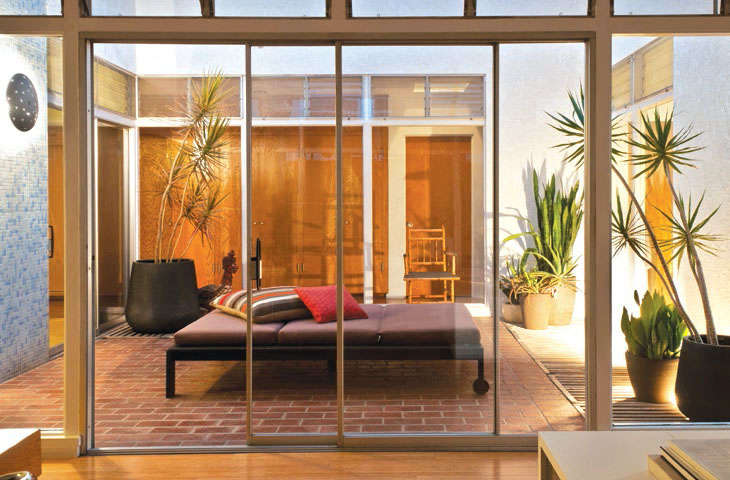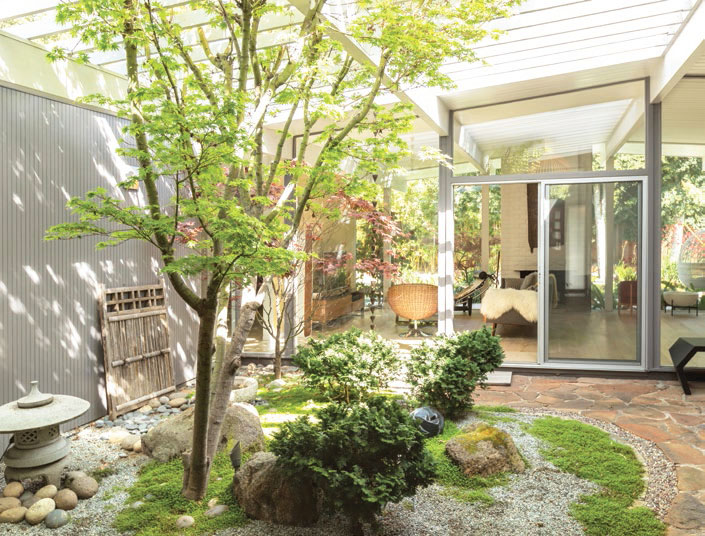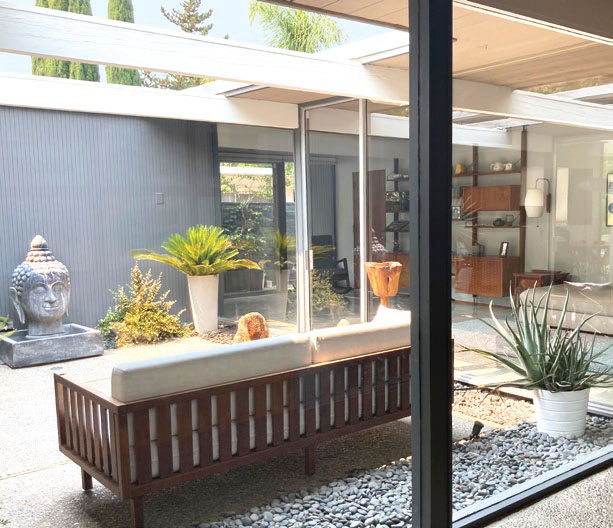Atrium Gardens - Page 2
 |
|
|
WATER & POWER
Before beginning your atrium garden, determine whether you will be hand watering or using an automated drip system. If the latter, confirm that water and electricity are available for atrium access.
Installing a drip system is not all that difficult, provided there is a hose bib and electrical power that you will be able to connect into.
Automated drips are "usually stand-alone systems, so you can run lines under the pavement and integrate them," explains Miller. "Sometimes there's a deck that you can run lines under, or tubes or pipes can be placed under wood dividers [as irrigation pathways]. But be careful about water intrusion into the house and issues like that.
DESIGN CONSIDERATIONS
Typically, in-ground plantings tend to be placed on the perimeter mainly because atriums are paved throughout their middle area. When determining specific planting locations in an atrium, Miller says, "I think that is a design choice."
"However, the utility of using the atrium as a room is really attractive. It's hard for people to resist that. I have seen and worked on some atriums that are more garden than room, but usually they're 80 percent pavement, 20 percent planting."
 |
|
|
Container plants also play a principal role in the design of an atrium garden, adding height and touches of color that can harmonize with furnishings and the overall décor.
"I like planting both ways," says landscape architect June Scott of June Scott Design in South Pasadena, "both in the ground and specifically in corners where you can get some height. That's actually one of the wonderful things about the atrium is playing with the height."
"I was recently at a restaurant that featured an atrium space in Mexico City, and plants were spilling down from heights. It was dramatic to see, really beautifully done," Scott adds.
"You can also design with a central focal plant of a tree or group of plantings, with additional plants around the edge."
Scott prefers using drought-tolerant plants. "They don't need much water, so you're not constantly applying water near your home."
In an atrium garden Scott designed in Long Beach, the owners had a daybed in the center of the space, so she designed plantings on two of the sides along the ground where there were original built-in drains.
"We lined the channel with Mexican beach stones and a wood grate top, and placed potted plants on top so they would drain directly into the ground," she says.
 |
|
|
HEIGHT & PLACEMENT
Before investing in plants, get to know the particular plants you are interested in and how much time you will have to spend maintaining them.
"One of the real challenges when I go out to old-growth Eichlers," Miller says, "is that small plants have grown to epic proportions and become a block to the window."
"I like to put a little green area up against the glass sometimes," he adds, "but when you do that you have to choose plantings that look fresh when viewed from 360 degrees."
 |
|
|
Miller recommends Southern Sword fern, a plant that's really tough and tolerant of hot sun or cool shade.
"Some kinds of bamboo can also be good," Miller suggests, "as long as there's some pruning and thinning going on. Not a hard-and-fast rule, though—but see what happens to the plant over time, and how it looks from the inside/out and outside/in."
For his Palo Alto project, Miller drafted three potential landscape designs that combined new, deep planters with existing shallow planter boxes and cylindrical planters. In the deep planters, he specified a tall tree such as dogwood or Japanese maple. For the shallow boxes and cylindrical planters, he selected a blend of filler shrubs including Cape Rush and rice-paper plants, along with Blue Chalksticks and variegated lilies, which worked as a ground cover, spilling over the edges of planters to soften them.
In Scott's Long Beach atrium design, she used Dracaena and two different Sansevierias. "The linear foliage on all the plants kept the mixture to just a few container styles, which tied everything together," she says.




